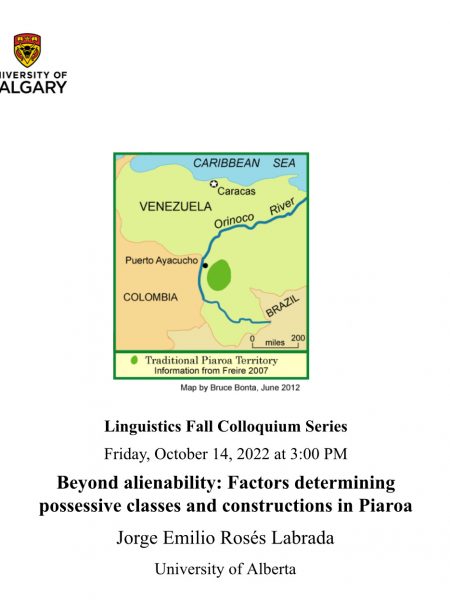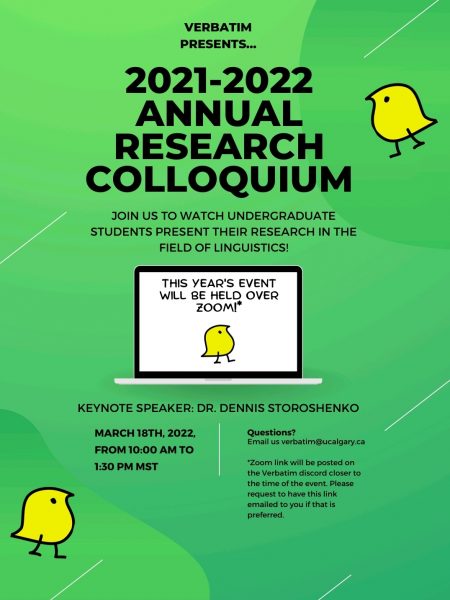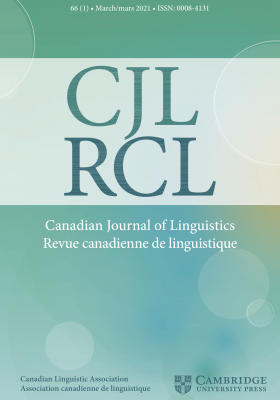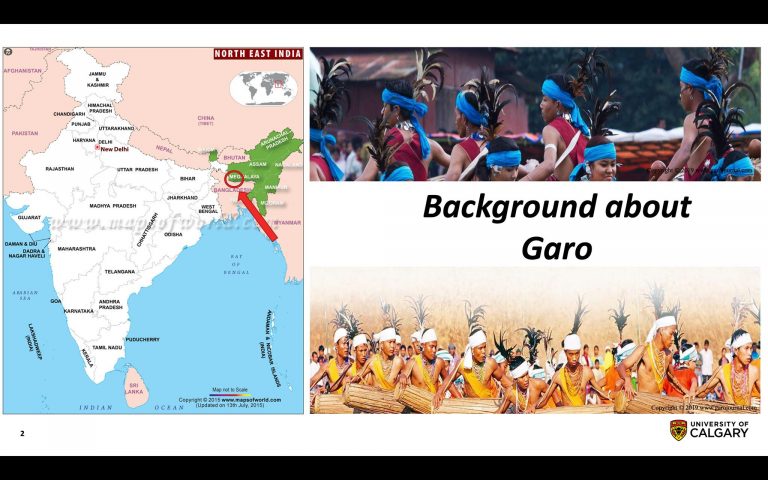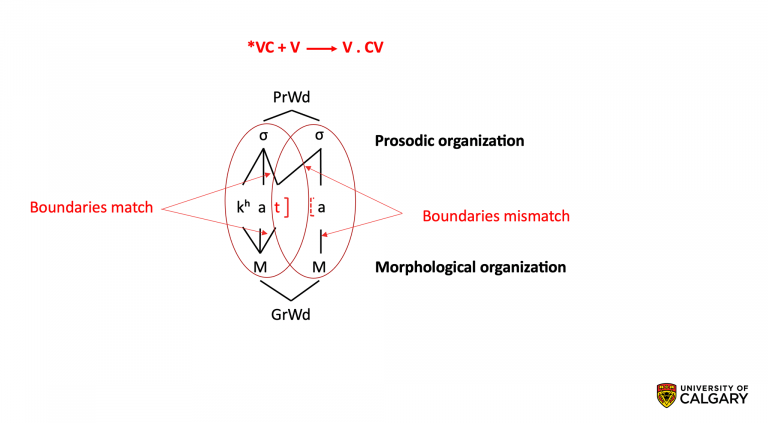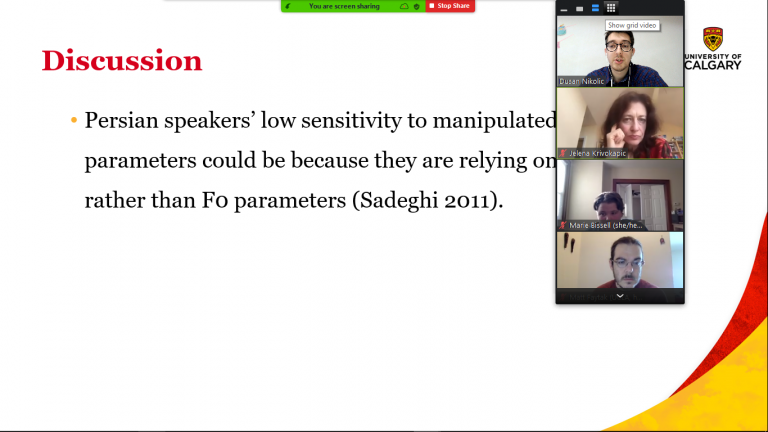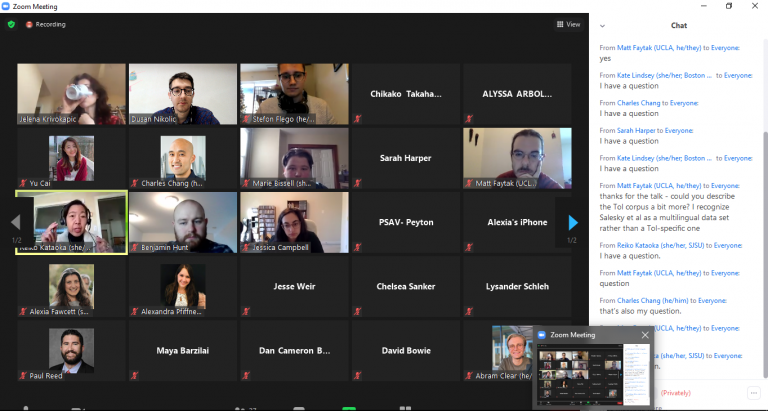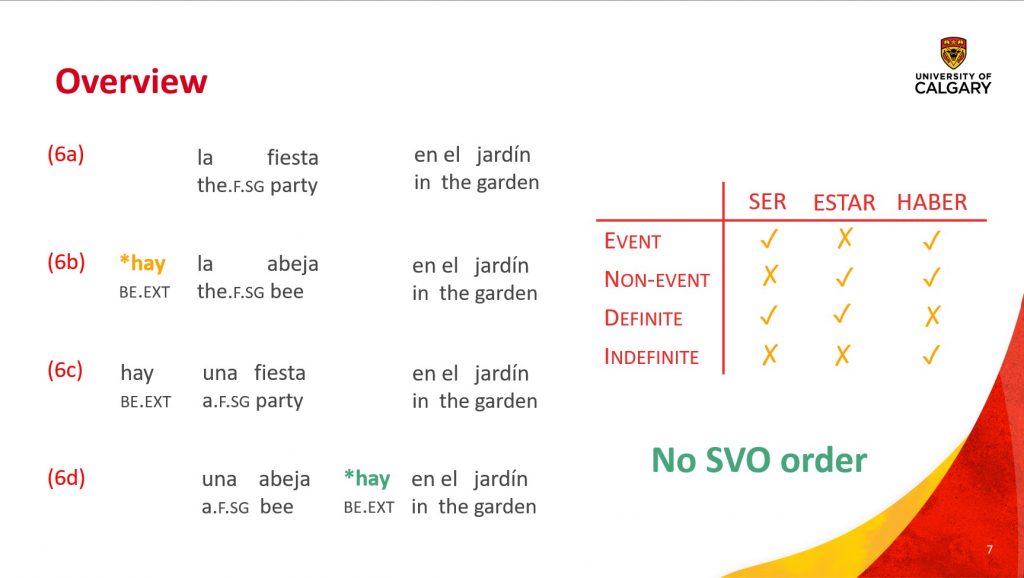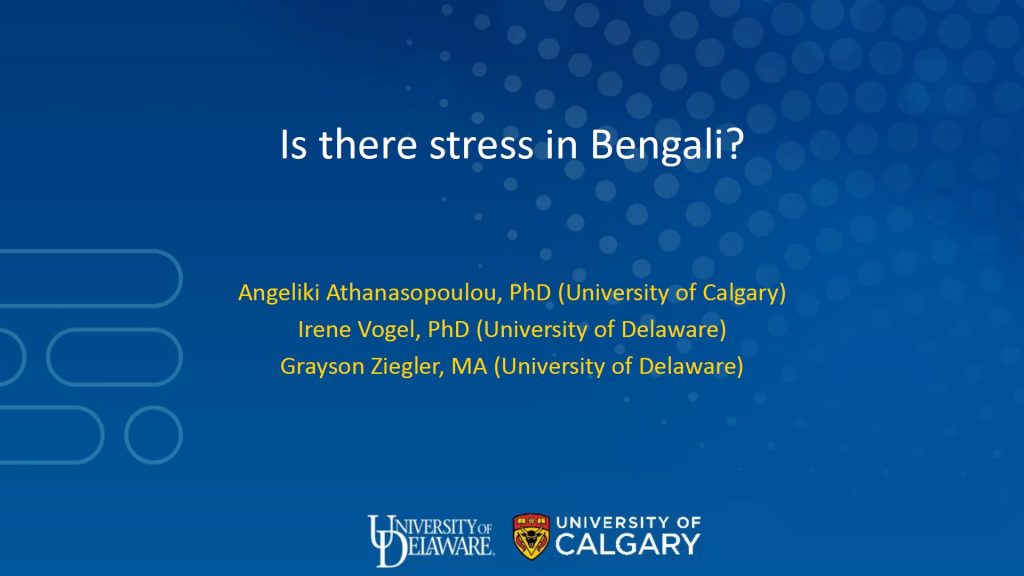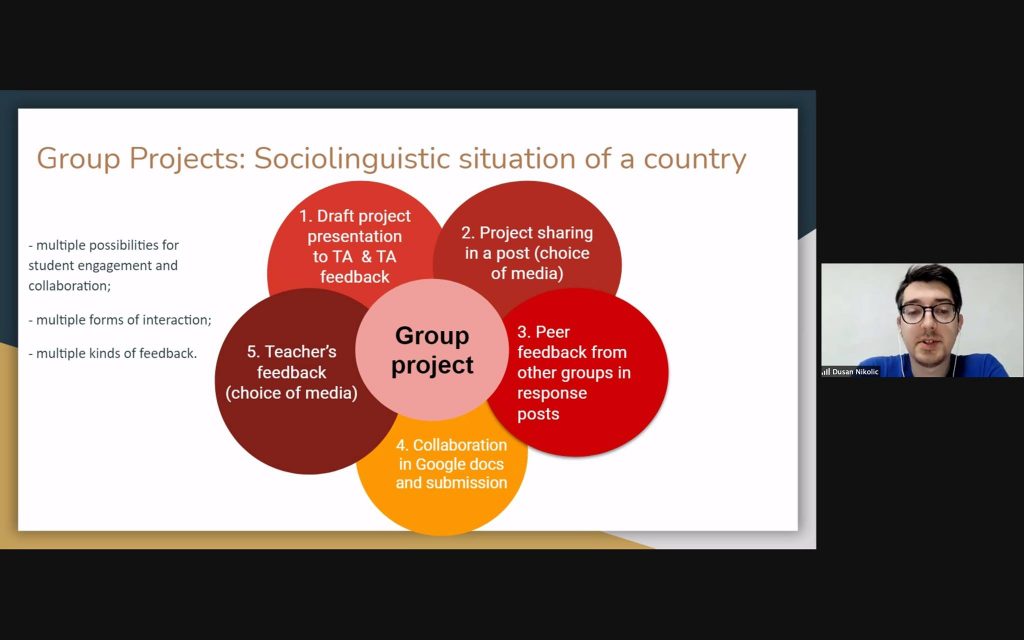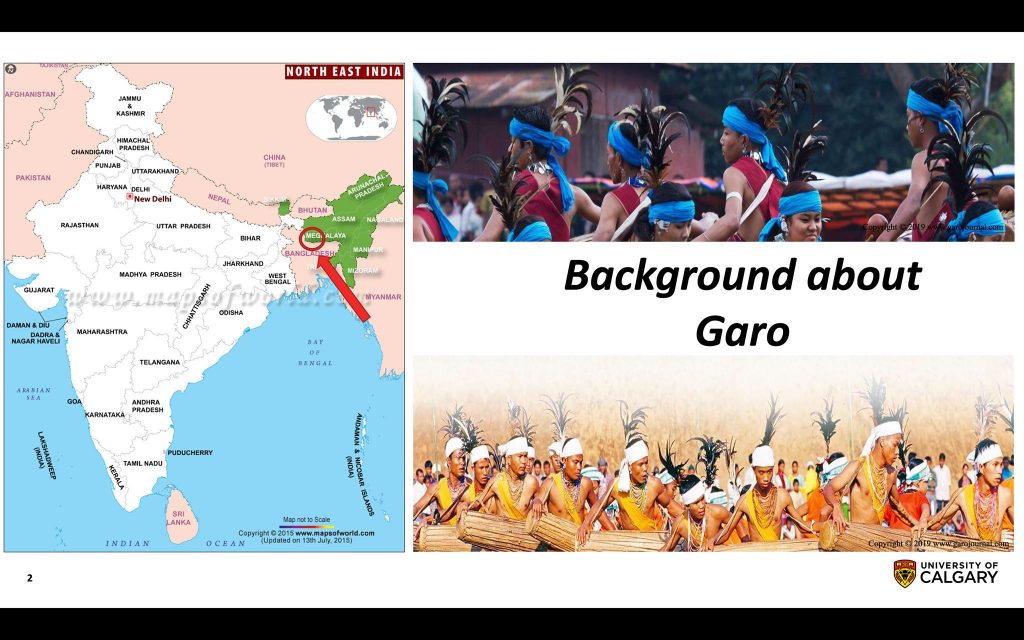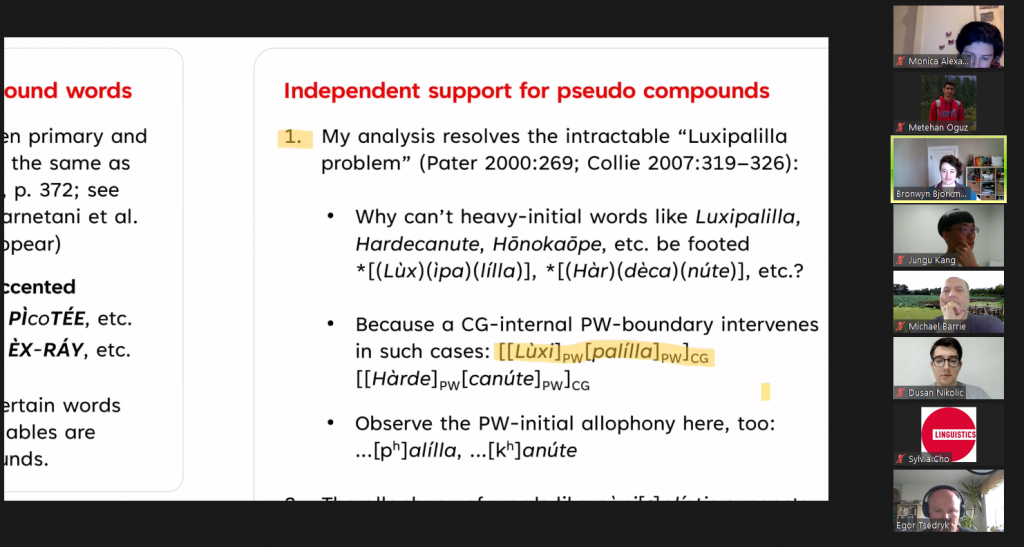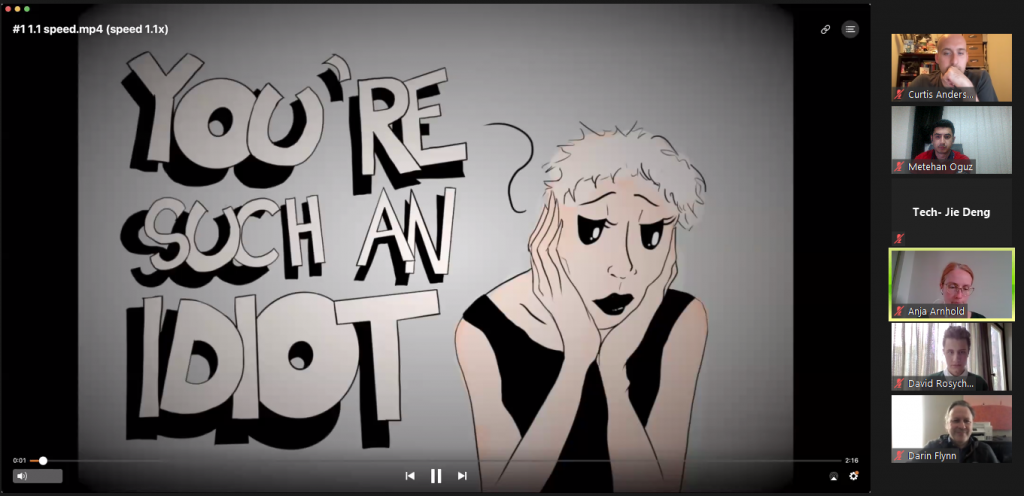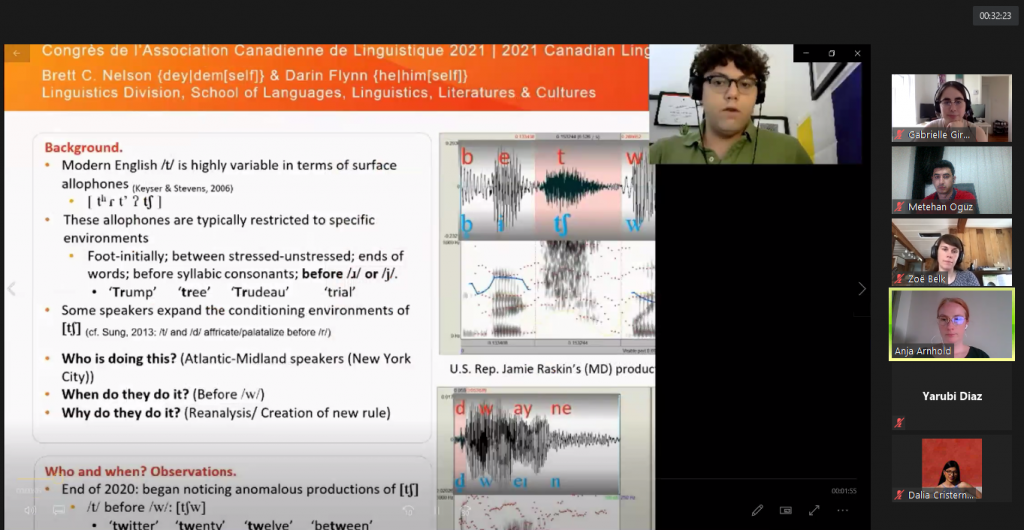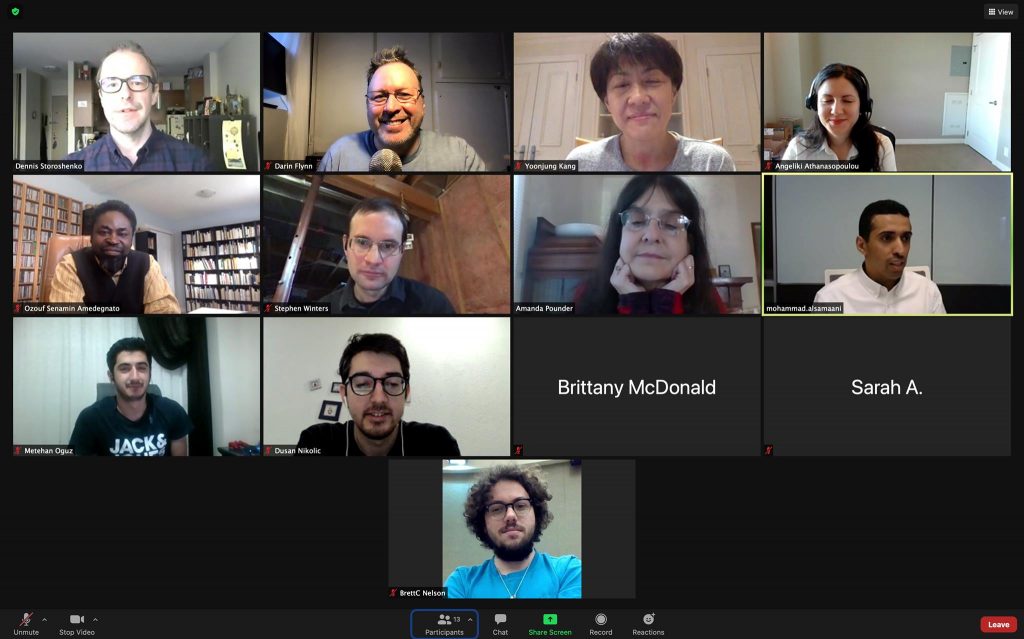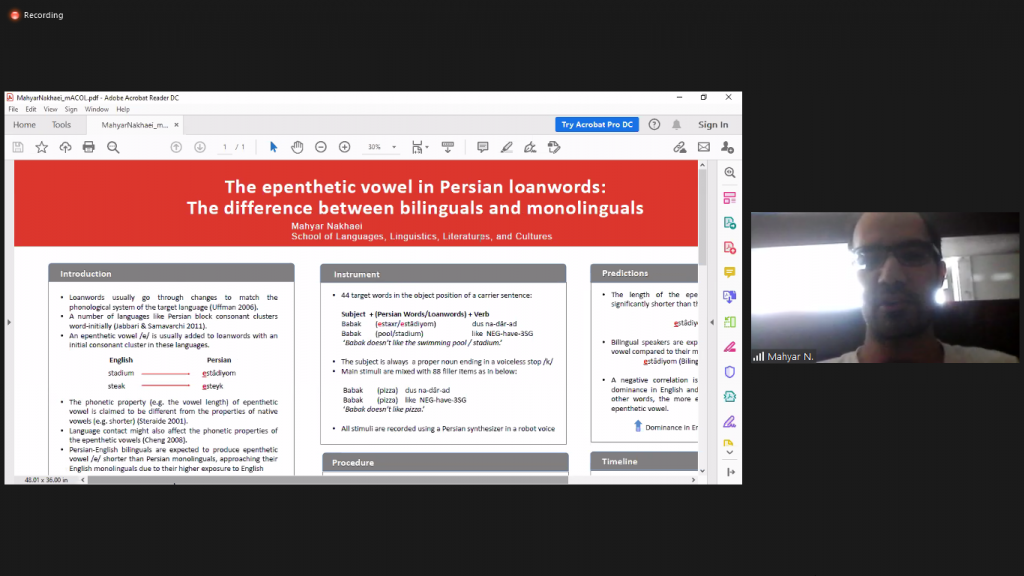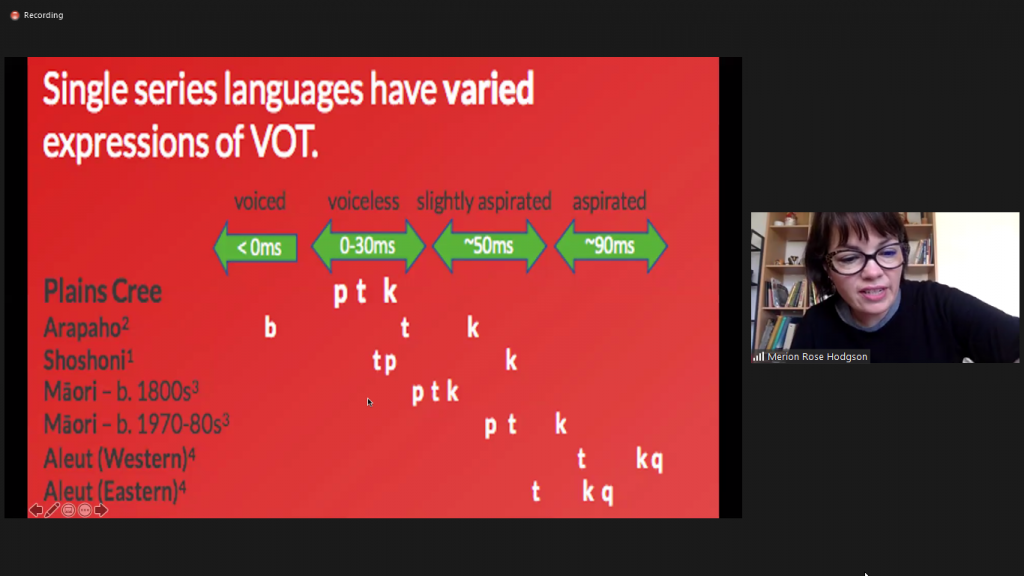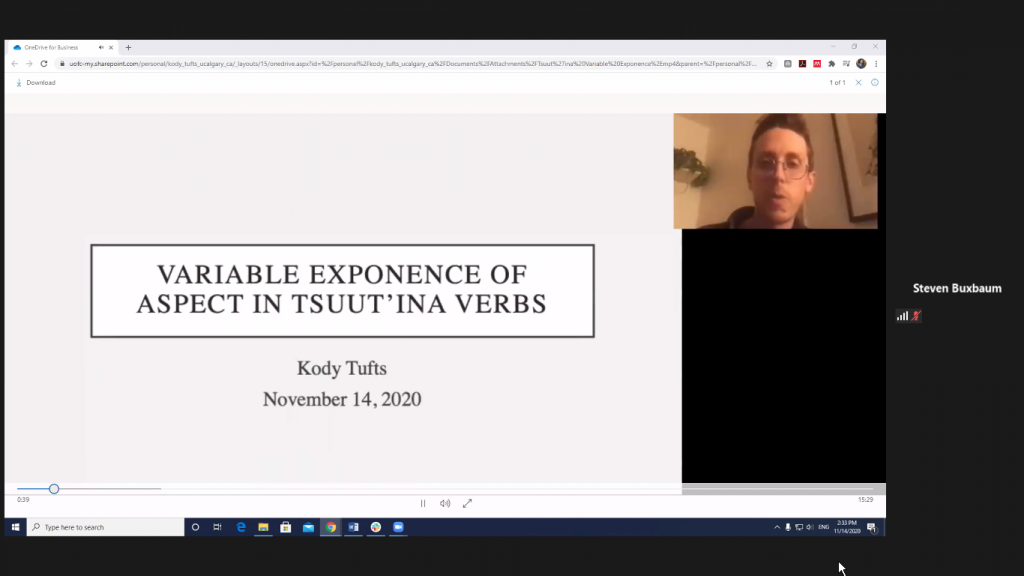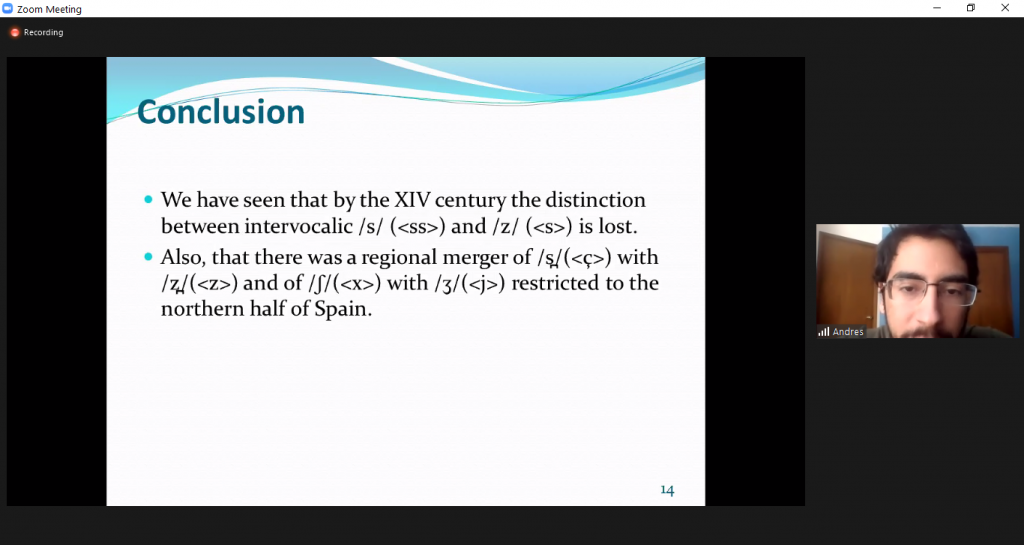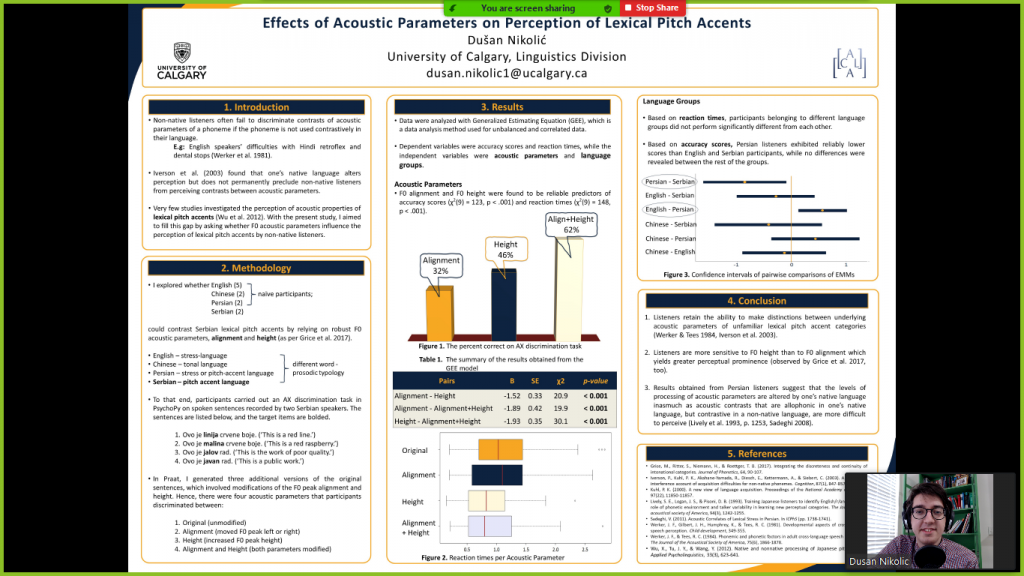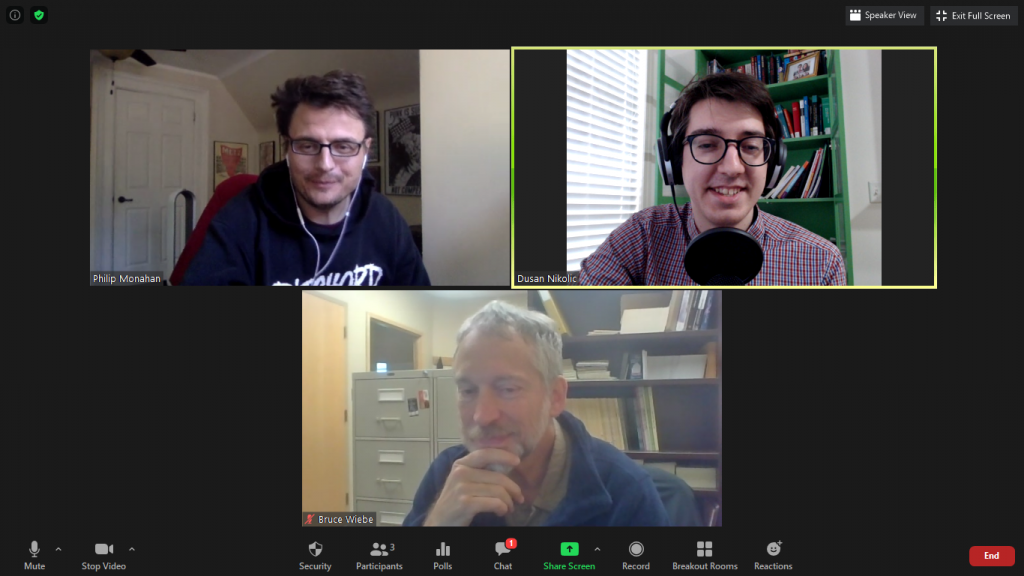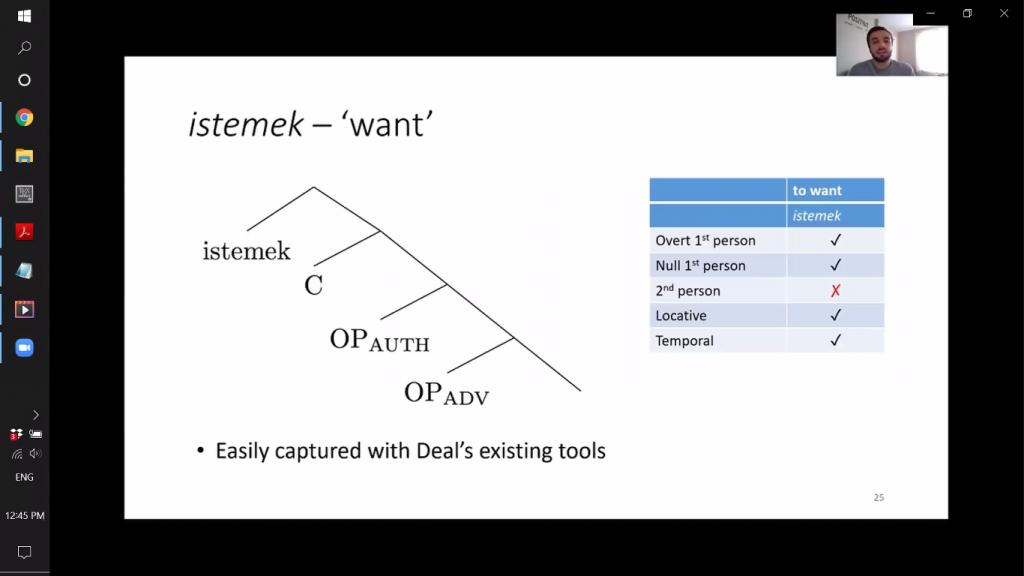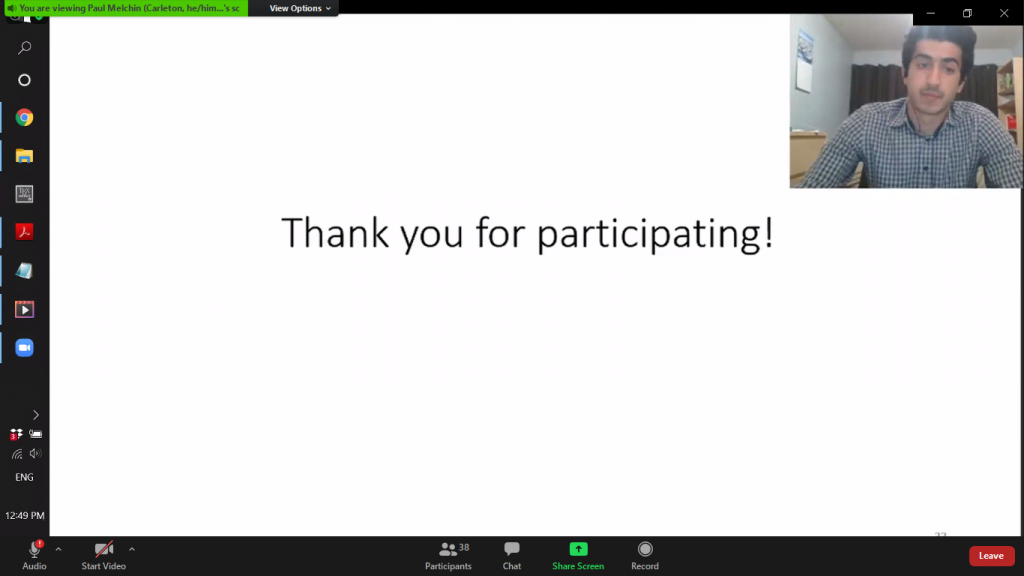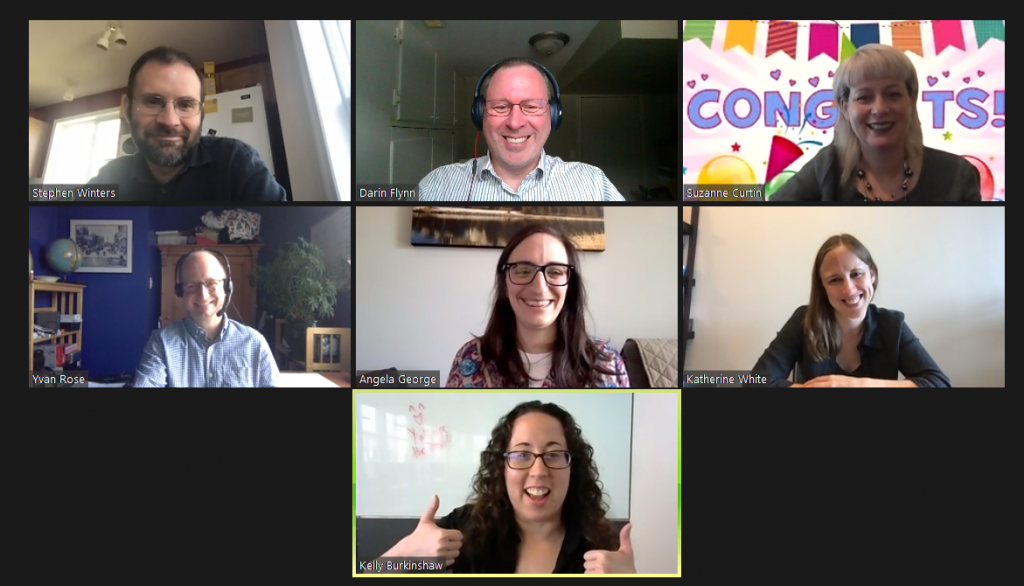Alberta Conference on Linguistics 2022
ACOL 2022 was hosted at the University of Calgary on October 29. The following UCalgary students presented at ACOL:
- Kang Xu – A preliminary study on the tonal system and the tone sandhi in Huangpi dialect
- Charys B. Russell – Let Me Demónstrate: A diachronic look at stress placement with English derivational suffixes
- Ya’ara Gurel – Voice assimilation in Colloquial Hebrew: An analysis of theoretical frameworks
- Anika Rogalski – Why did you say it like THAT? The perception of focus prosody across contexts
- Madeline MacLean – Context and affective prosody in perceiving emotion
- Francisco Ongay González – Syntactic characterization of llevar + time in Spanish
- Peng Qiu – Comparative analysis of the syntactic functions of plural markers in classifier languages
- Summer Abdalla – Acquisition of Arabic word stress
- Lisa Süssenbach – Testing the functional load principle in segmental contrasts of German
For more information on #ACOL2022, check our our Twitter!


